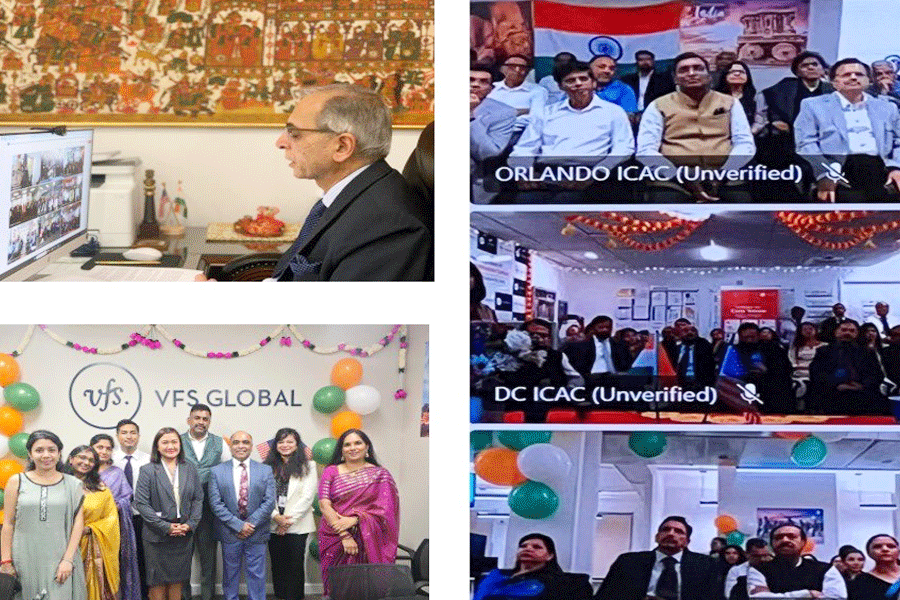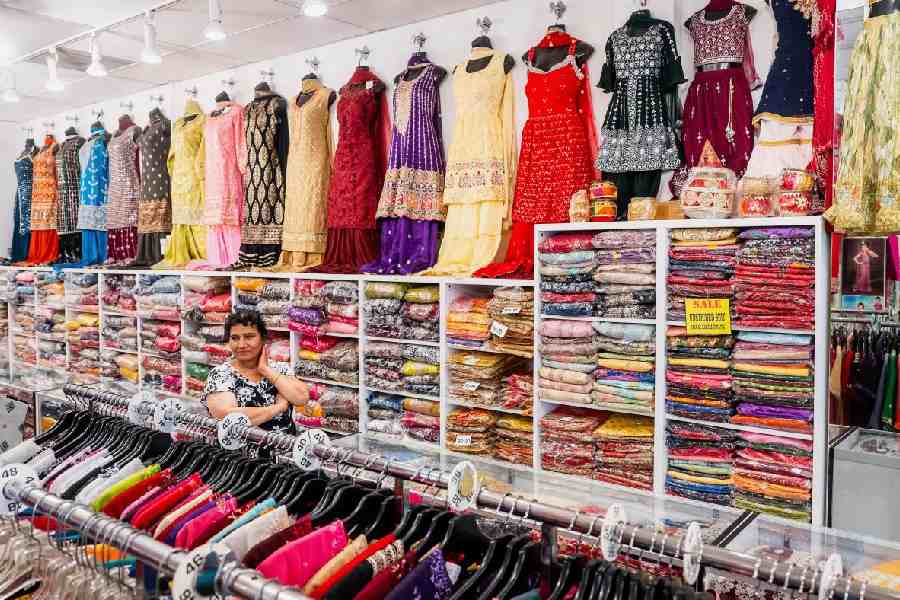 |
| An exhibition of cane and bamboo products organised by IIT design department. Picture by Eastern Projections |
Things came before people
People came before words
Tall, green and nameless,
Bamboo walked down centuries
And crossed continents
In time to stand there, waiting,
Naked of language,
When the first people came
To make the first village
The northeastern region of India is a locale where bamboo has its roots and shoots, both literally and metaphorically. People here have used it from time immemorial. But as it often happens, the fact remains that bamboo has been taken for granted and few thoughts have ever been given to its vast potential.
The same scenario is also very true for all the other countries of south and Southeast Asia.
The Northeast comprising Arunachal Pradesh, Assam, Manipur, Meghalaya, Mizoram, Nagaland, Tripura and Sikkim stands out from the rest of India because of its collage of a large tribal and other ethnic groups possessing their own distinct cultural, linguistic, religious and historical identity. What is more intriguing is that this identity is akin to that of the populace of other Southeast Asian nations.
As it happens, we often tend to forget the fact that through the centuries there has been a natural exchange of people, goods and services between the Northeast and the countries of south and Southeast Asia.
There is a large number of people of Indian origin living in other countries of the south Asian region who retain close cultural, emotional and spiritual ties with their motherland. And, bamboo provides the green link between the people living in the Southeast Asian nations.
Bamboo handicrafts have played a pivotal role in the social and economic lives of the people of the Northeast. The people here regard this occupation as a sacred duty from generation to generation.
In this area, crafts are not practised as hobby, nor are they a commercial venture; they are very much an integral part of the life and customs of the people.
The indigenous handicrafts that in other parts of the country are confined to professional castes were practised as household industries in the Northeast.
Here, there is no dearth of raw materials. Once again, the same concept holds true for the south Asian nations. The Vietnamese refer to bamboo as ?My brother?, the Chinese ?Friend of the people? and in the northeastern India, it is said that every household in the rural areas has at least a clump of bamboo in their homestead land.
Such ties link the nations of Southeast Asia as a unique fraternity.
India is the second richest country in terms of bamboo genetic diversity with a total of 136 species under 75 genera. It encompasses about 8.96 million hectares of forest area, which is equivalent to 12.8 per cent of the total forest cover of the country. Within the forest area, it suffers from poor management, low productivity and over-exploitation.
However, there has been a growing awareness in recent years about bamboo being an important component of development and an effective means to improve the livelihood of rural poor. This plant, which has over 1,500 recorded uses, offers excellent opportunities for employment and income-generation and improving the nutritional status of the rural poor. It is in this context that the Planning Commission and the government of India embarked upon the revolutionary idea of harnessing the hitherto unutilised bamboo resources of the country.
The report brought out by the Planning Commission of India in the National Mission on Bamboo Technology and Trade Development lays down the roadmap of the country?s future in bamboo for the next two decades.
It lays emphasis on ?what? is to be done with the bamboo resources, particularly the substitution of wood by bamboo. The principal objectives of the report were to (i) use bamboo development as an instrument of poverty alleviation and employment generation, particularly in the rural sector; (ii) diversify, modernise and expand bamboo-based industries through the application of modern technology and financial support; and (iii) use bamboo as a means to achieve ecological security through plantation of quality species needed by the industry and the handicrafts sector.
Traditional engineering innovations, like the suspension bridges built by the Monpa tribals of Arunachal, are also abound.
In Bihar, bamboo is replacing steel in tube-well pipes because it is cheaper, rust-free and more durable. With tensile strength comparable to steel, bamboo stands out as an excellent engineering material. Bamboo fibres have the potential to replace glass fibres in manufacturing fibreglass.
Bamboo panel boards are becoming an interior decorator?s delight. Waterproof concrete shuttering is yet another innovative way of using the plant.
Even if 5 per cent of wood can be substituted by bamboo, it will be a good achievement. However, a lot needs to be done in this direction. The experience in several Southeast Asian nations shows how, with innovative usage, bamboo has given shape to vibrant, sustainable local economies. India has the potential of emulating the feat, but it needs first to overcome the huge gap marked by research and its application, besides the usual hurdle between the community and the government.
Bamboo today contributes to the subsistence need of over a billion people, and has played a significant role in human society since time immemorial.
Traditional uses as varied as fuel, food, housing and shelter, tools, and music comprise but a part of the broad spectrum of bamboo use. At the same time, equally important are bamboo?s industrial uses and its potential role in mankind?s future.
Bamboo for pulp and paper, construction and engineering materials, panel products, and an array of modern uses are becoming better known. Resource mobilisation and management, technology and processing, policy, and international education and co-operation must be emphasised in developing a future for bamboo as the timber of the 21st century.
The virtues of bamboo are not new but the interest in it is. It is now coming to be known as the most promising wood substitute with the developed nations taking as much interest in it as the developing.
Though most people associate it with handicrafts, its utility has extended far beyond. The world over, bamboo offers a wonderful opportunity to integrate the rural community with modern industrial processes, building a strong inter-dependence model to the benefit of both.










